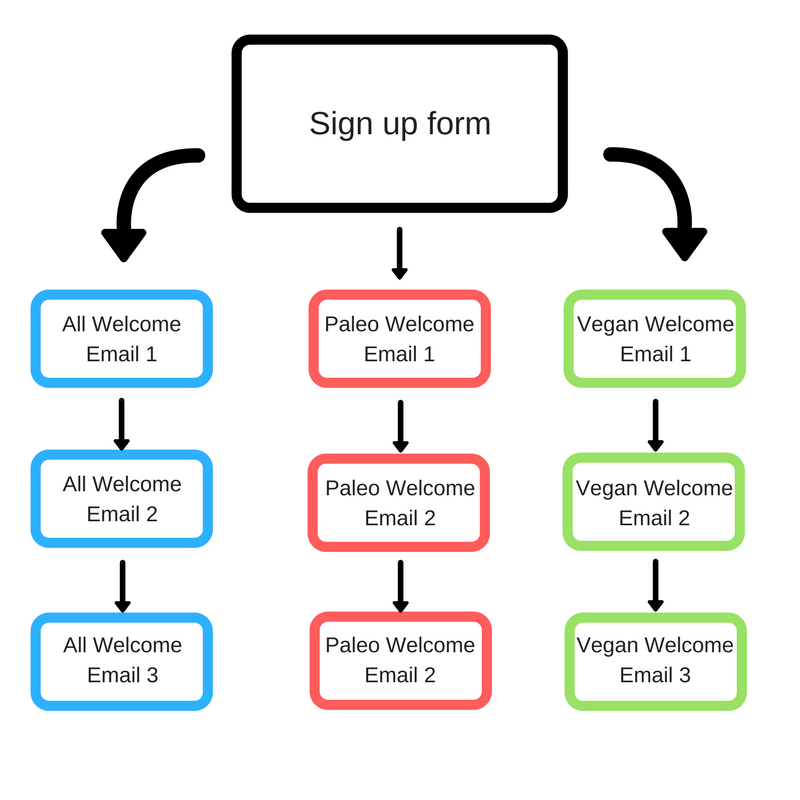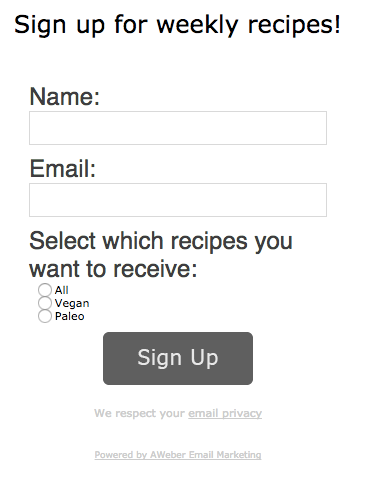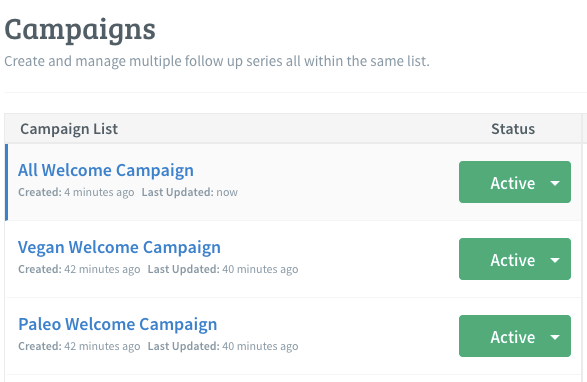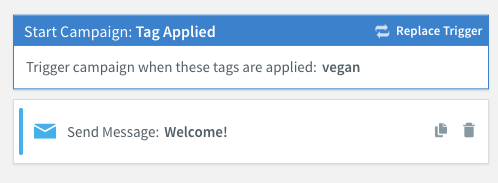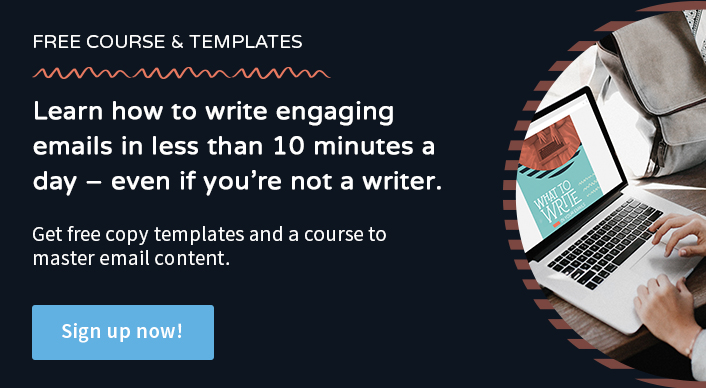How to Use Segmentation for Targeted, Automated Welcome Campaigns
By Monica Montesa May 4, 2017
We talk a lot about welcome emails on our blog (I’m sure all of our regular readers are nodding in agreement!).
One of the reasons why it’s a frequent topic? Because it’s one of the most important – and easiest to implement – types of automated campaigns you can create. And, it’s a series that can be used by anyone across every business, hobby, industry and email experience level.
While you can read more about why a welcome series is necessary, I want to take a more thorough look into the benefits of creating multiple, targeted welcome campaigns for your subscribers and how to set them up.
Why targeted welcome campaigns?
With email automation, you can nurture relationships and save valuable time by letting your emails do all the work for you. With segmentation, you can send more relevant content to targeted subscribers who want it most.
And when you combine the two together, you enter a whole new world of targeted content and efficiency.
There are many ways in which to create targeted email campaigns, and an automated welcome series is a perfect place to start.
Targeted welcome campaigns based on your subscribers’ interests allow you to:
- Make a good first impression
- Send hyper-relevant information from the get-go
- Learn important information about your unique subscribers (which will be valuable as you craft new content for them in the future!)
Now, let’s walk through creating targeted welcome campaigns.
Building the framework
First, think about the best way for you to categorize your email content and audience. Should you segment subscribers based on their interests, geographic location, experience level or something else?
If you’re a food blogger who creates a variety of recipes, for example, you might want to segment your audience based on different dietary needs (e.g., gluten-free, vegan, paleo).
(To help you learn more about ways to segment your audience, I recommend reading this article. You can always change your approach in the future, but it helps to have a starting point!)
Once you know how to segment your audience for your welcome series, it’s time to set up the following:
- A sign up form with fields that asks for specific information about your subscribers
- Automated campaigns for each subscriber segment
- Emails that go into each campaign
Here’s a blueprint of what this experience might look like:
Now, let’s dive into setting this up.
Creating sign up forms and campaigns
Sign up form
In addition to asking for name and email address, include a custom field to obtain additional information, like specific interests. When you do, be sure to include unique tags that correlate with each selection.
For your food blog, we’re going to create targeted welcome campaigns based on your audience’s dietary needs. Here’s what your sign up form might look like:
Automated campaigns setup
Create an automated email campaign (aka, follow up or autoresponder series) for each segment. This is where you’ll build your targeted welcome campaigns, like these:
The specific setup will vary depending on what email marketing platform you use. AWeber users, for example, will want to make sure each campaign triggers on a corresponding tag for each segment:
Emails
First, focus on one welcome campaign at a time.
For the first email in your welcome series, make sure you cover the essentials:
- Welcome and thank subscribers for signing up to your list
- Provide your incentive if you offered one on your form
- Share other ways to stay connected (such as social channels) and contact information
The second email in your welcome series is a great opportunity to share your best content to an audience that has yet to receive it. Your new subscribers won’t necessarily be familiar with your older posts, so now’s the time to give it to them!
For each of your diet-specific campaigns, for example, try including your 10 most popular recipes. By directing your vegan or paleo subscribers to content that’s most relevant to them, you’re able to automatically deliver a positive experience with your brand.
In the third email in the series, consider using this as an opportunity to learn even more about your audience. Prompt direct engagement with subscribers by asking them a question, like “What’s your biggest challenge?” and invite them to reply to the email.
Or, ask them to leave a comment on a recent blog post or join an upcoming webinar. The goal here is to encourage subscribers to take a small action.
Once you’ve completed the email content in one series, be sure to go through this process again with tailored content for your remaining campaigns.
And voilà! Your targeted automated welcome campaigns are all set up and ready to go.
Pro Tip: You can have as many emails in your welcome series as you see fit. In this example, we kept it to three. To help you identify the perfect number of emails for your audience, think about the kind of information your new subscribers need to know. For more on what to write in your welcome email series, read “Welcome Email Campaigns 101.”
As soon as your email campaigns are set up and activated, test the entire sign up process. This will allow you to confirm the right emails are getting sent to the right people.
Optimizing your welcome campaigns for improvement
Once you launch an automated campaign, give it some time to collect data and see how subscribers are responding. Depending on the length of your welcome campaign(s), you may want to wait at least a month after your initial batch of subscribers complete it to make conclusions about performance.
Then, review your analytics to see where you might be able to optimize and improve your emails.
…But is it worth the effort?
Now I know some skeptics out there might wonder, “This sounds like it might take more time creating multiple automated series?”
Yes, the initial time and effort that goes into creating targeted automated email campaigns might be more than you expected. But when you have all of those things running for you in the background as you work on other important areas in your business, it’s absolutely worth it.
According to the Direct Marketing Association, targeted and segmented emails generate about 58 percent of all revenue.
Now imagine what would happen if you brought that to your automated email campaigns, too.
Delivering valuable subscriber experiences
Sending content your subscribers love is what email marketing is all about. And hopefully you now have another tool to help you do just that!
For more ideas on how to segment your subscribers and send targeted emails, check out this blog post, “16 Ways to Segment Subscribers and Boost Engagement”.
If you need more help with what to write in your emails, sign up for our free email course, “What to Write in Your Emails” today:
 87% off ends soon!
87% off ends soon! 